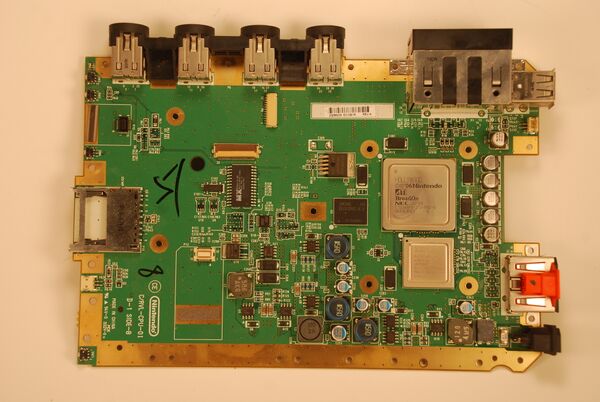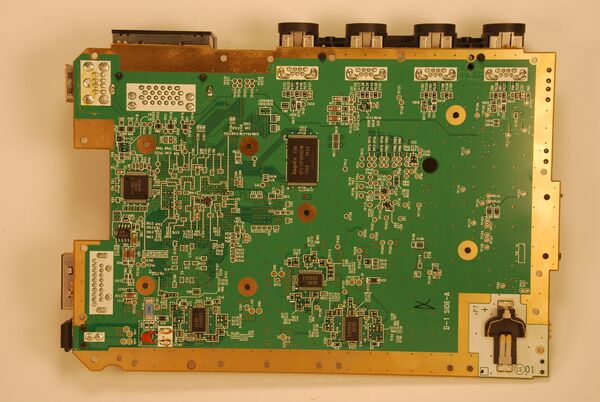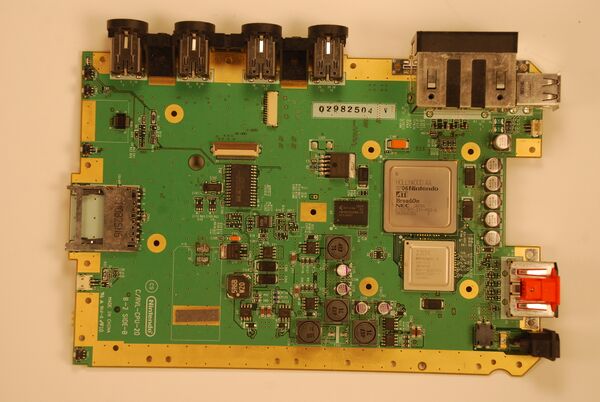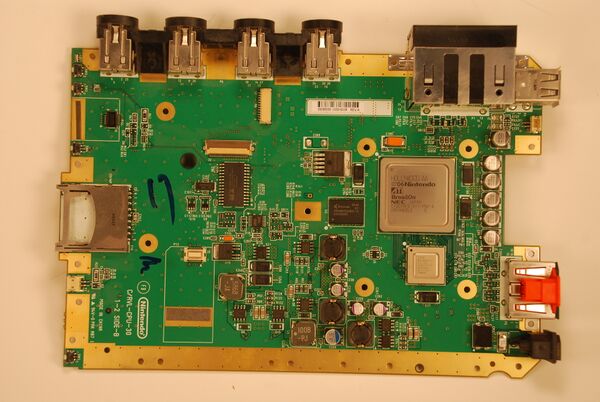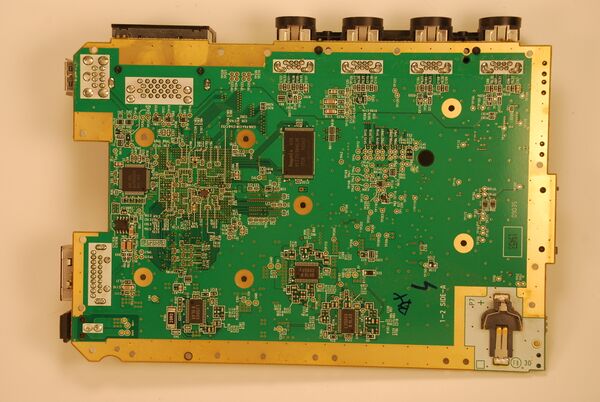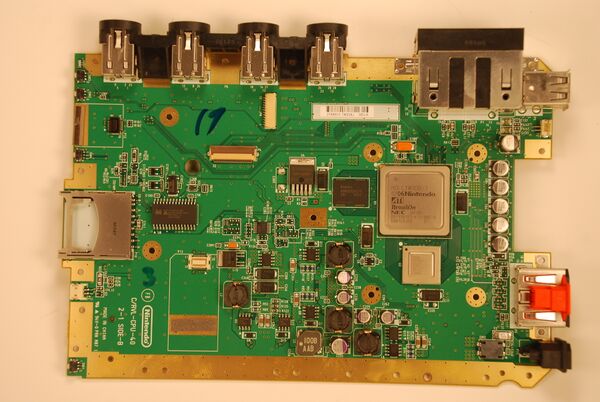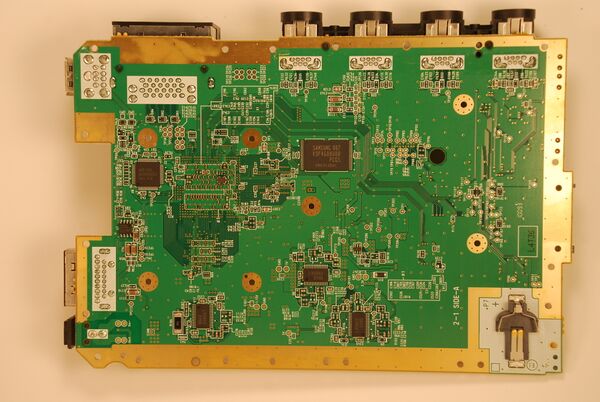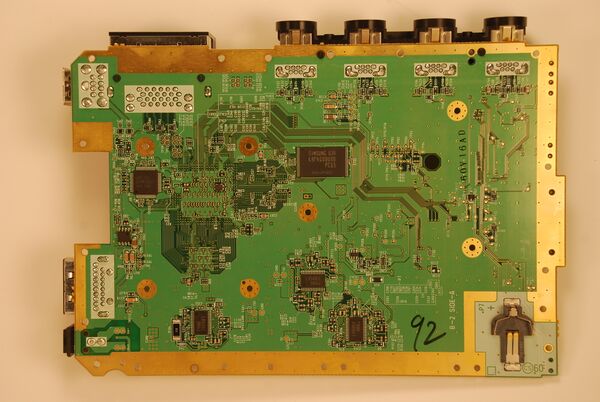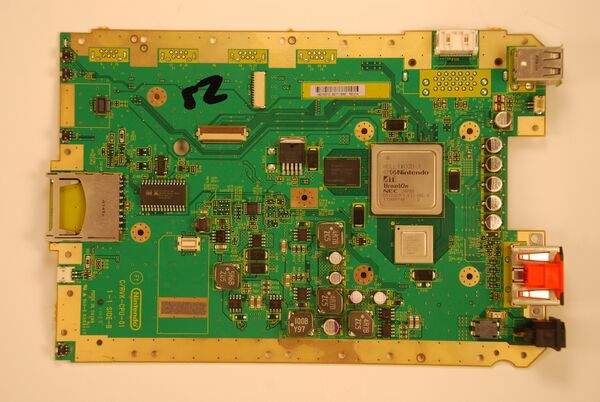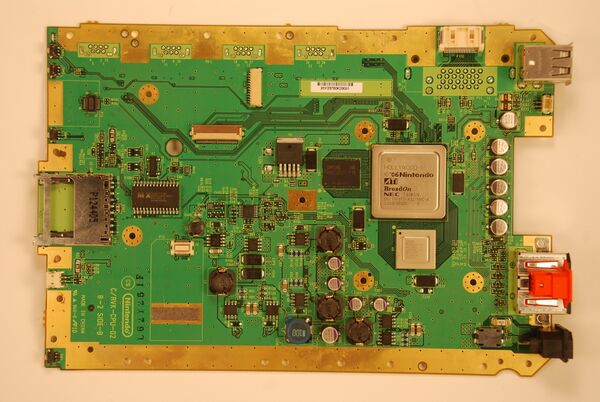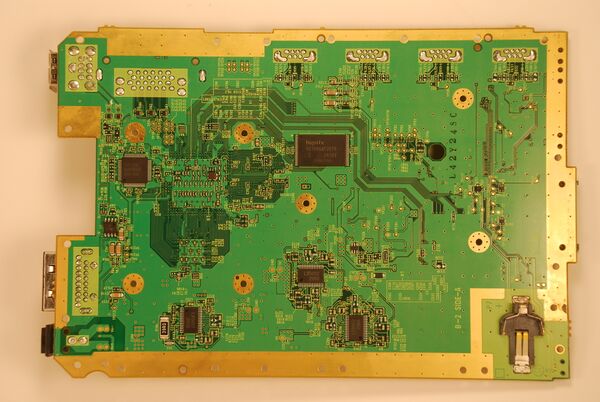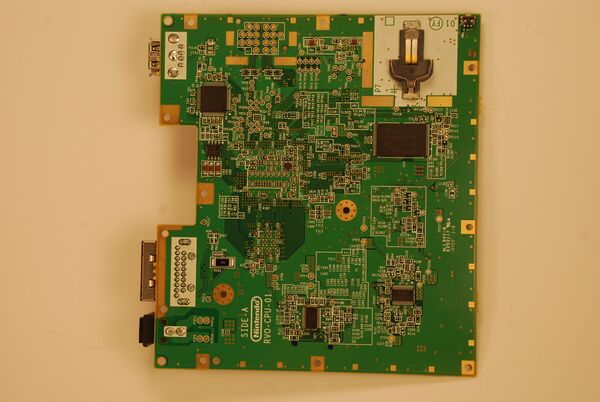Motherboard Information
The following information and images have been sourced from Shank's Wii Super Thread on Bitbuilt.
RVL-001 Motherboards
RVL-CPU-01
Description
This is the motherboard used in launch consoles. It has a six layer PCB, 90 nm Hollywood GPU, 90 nm Broadway A CPU, and the highest power consumption.
The 90 nm Hollywood GPU in the first three board revisions of the Wii was also effected by the bumpgate issues of many chipsets in the mid to late 2000's, but on the Wii it wasn't as easily noticed compared to other chipsets due to the very low TDP of the Hollywood. However, since the ARM processor in the GPU handles the instructions of WiiConnect24 while in standby mode with the fan turned off, the GPU gets too hot and the solder bumps between the die and substrate crack, causing the GPU to fail. This is easily countered by just having WiiConnect24's standby connection setting turned off, or less boringly by performing a fan mod.
Images
Board Scans
The following high quality board scans have been supplied by the late scene developer Ben Byer, also known as "Bushing".
RVL-CPU-20
Description
Minor tweak to the RVL-CPU-01. It didn't change much aside from CPU's power delivery components, as the CPU was shrunk to 65 nm with the Broadway B. The GPU also had a slight revision called the Hollywood AA.
The efficiency was slightly increased from the new CPU, but not by much due to the GPU having far more functions and thus being the component with most of the power draw (especially when playing games).
This model, as well as the following ones, were at the time popularly known as "LU64+" (after their approximate North American serial numbers) due to the hardware not being exactly timing-accurate with its previous revision, resulting in critical incompatibilities with most older IOS (notably excepting the leaked IOS16 v257, and IOS15 v257) that led to expensive accidents as unaware modders followed contemporary downgrade-centric modding guides.
Images
RVL-CPU-30
Description
Another minor revision to the six layer family of Wii motherboards. This time, the Broadway-B CPU was changed to be the Broadway-1, which had a much smaller substrate.
Some of these motherboards also patched the boot1 bootloader from allowing access to modifications of boot2, meaning BootMii could no longer be installed early in the boot process.
Images
RVL-CPU-40
Description
The RVL-CPU-40 was the first major motherboard revision to the Wii, and would be the last major revision until the Wii Mini. The general layout was vastly simplified and the PCB was reduced to being four layers for further cost cutting.
It retains the shrunken 65 nm Broadway-1 CPU, while also featuring a new 65 nm Hollywood-1 GPU. Since the GPU was the main component responsible for the Wii's power draw (especially during gaming), the efficiency was drastically increased compared to the previous motherboard. The new GPU was also no longer effected by the bumpgate issue that the previous 90 nm Hollywood and Hollywood AA had, so WiiConnect24 in standby mode didn't cause them to fail.
Enthusiasts who intend to trim Wii motherboards to be much smaller on other projects tend to prefer RVL-001 motherboards with the Hollywood-1 (like this one) or any RVL-101 motherboard due to the much lower power draw and easier trimming procedure, as the PCB is thinner and the trimming area can be much smaller than older motherboards.
Images
RVL-CPU-60
Description
Minor revision to the RVL-CPU-40. Not much changed from the previous motherboard aside from swapping the linear regulator responsible for the "always on" 3.3v line to a switching regulator, which further reduced power draw by a small amount.
Images
RVL-101 Motherboards
RVK-CPU-01
Description
This is the first motherboard used on the Wii Family Editions. It's essentially an RVL-CPU-60 but with the I/O for GameCube peripherals removed, with a proprietary debugging header soldered in place of where the memory card connector goes.
Images
RVK-CPU-02
Description
This is the next revision featured in the RVL-101 consoles. There are no known differences between this and the RVK-CPU-01.
Images
RVL-201 Motherboards
RVO-CPU-01
Description
The last ever motherboard made for the Wii as a whole, and was used for the Wii Mini. It has been drastically redesigned, simplified, and shrunken in order to both reduce the size and cost of the console.
It still retains the same 65 nm GPU and CPU that were first used on the RVL-CPU-40.
The optical drive uses a new single connector for both power and data, although it is still electrically compatible if the pinout is matched. Rather large testpoints on the bottom provide connection points for one GameCube memory card, GC controllers 1 and 4, and the SD card slot — i.e. all external interfaces used in the manufacturing process. The lately removed Wi-Fi card socket on the top is also rather prominent.
